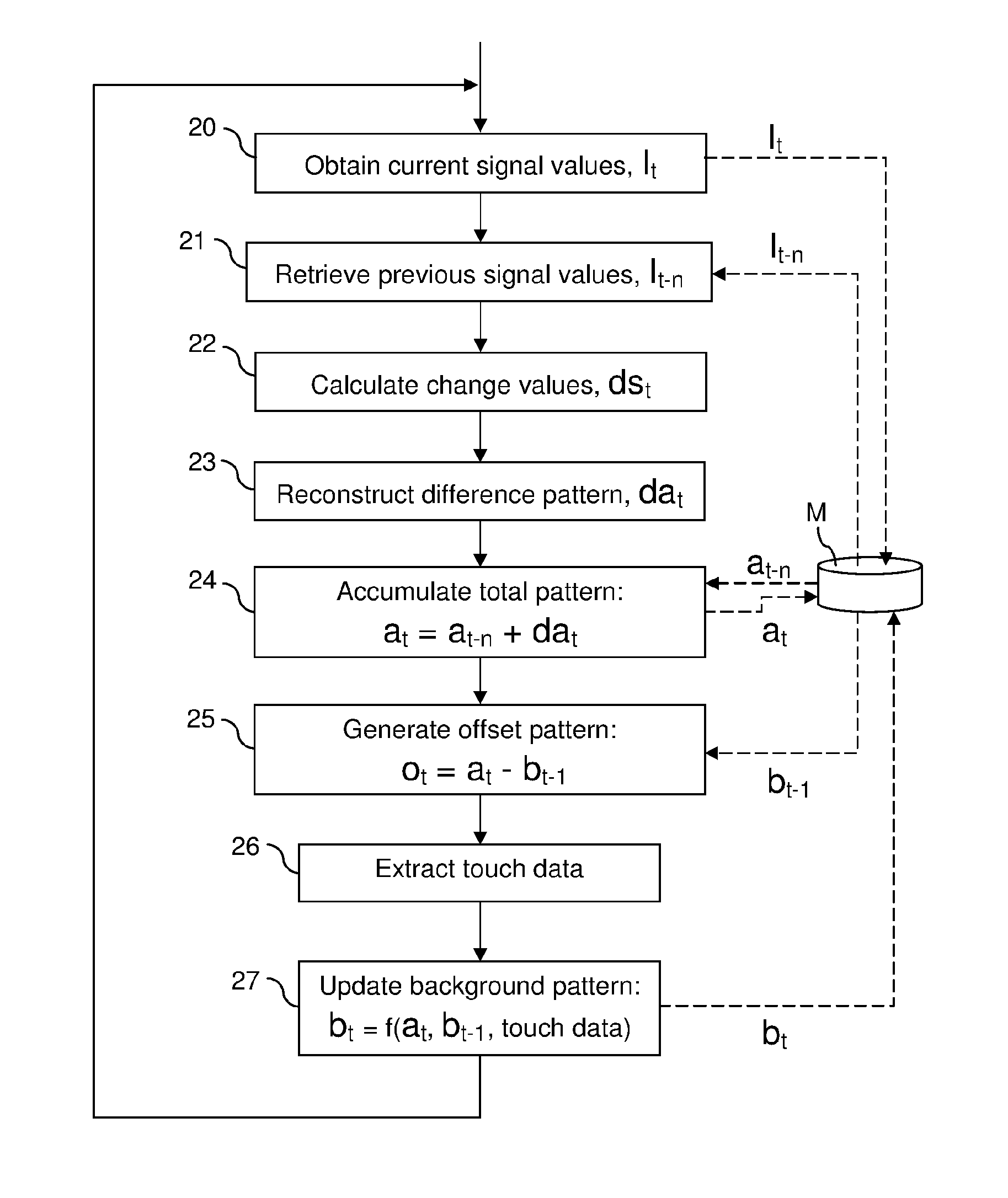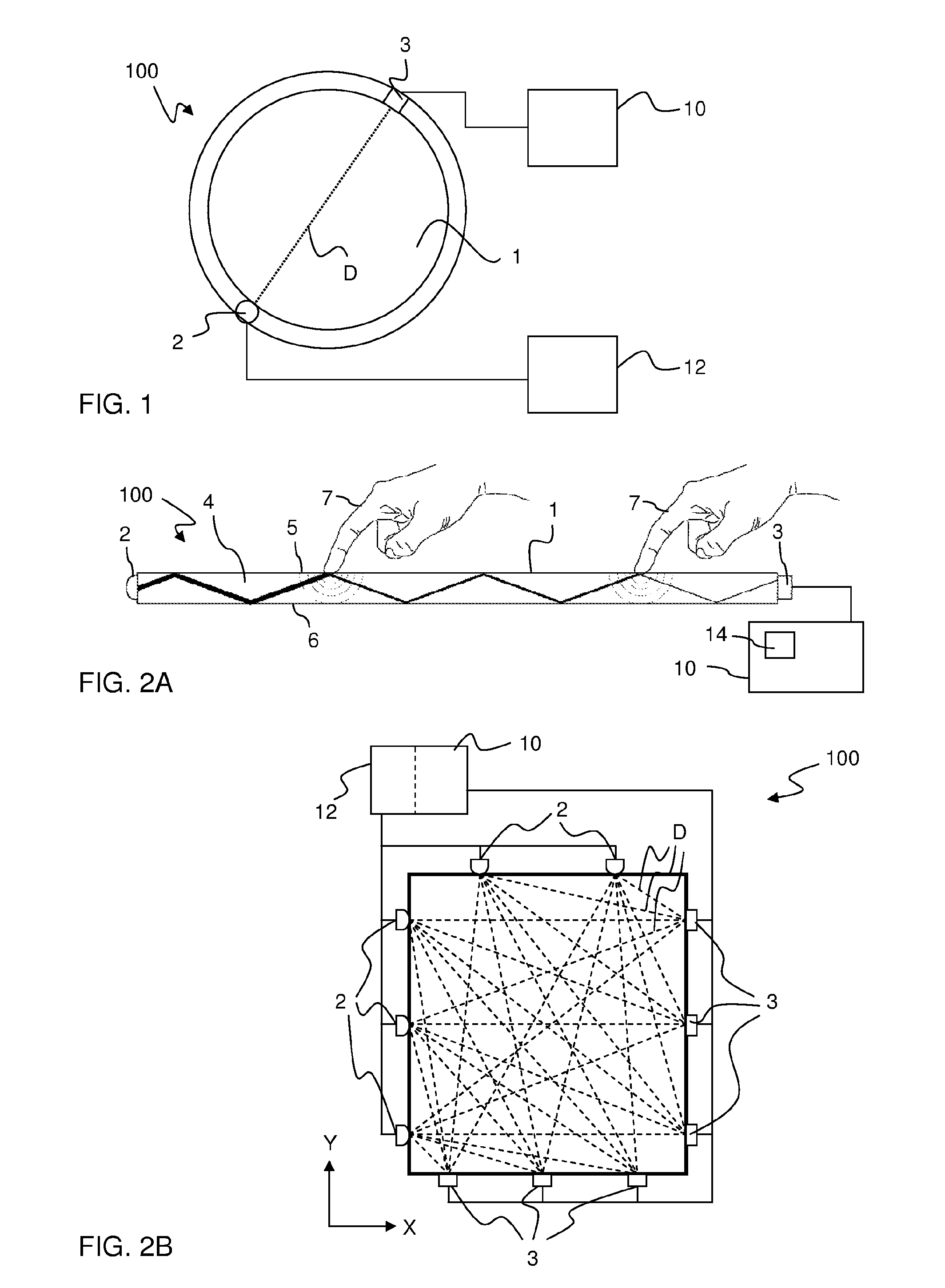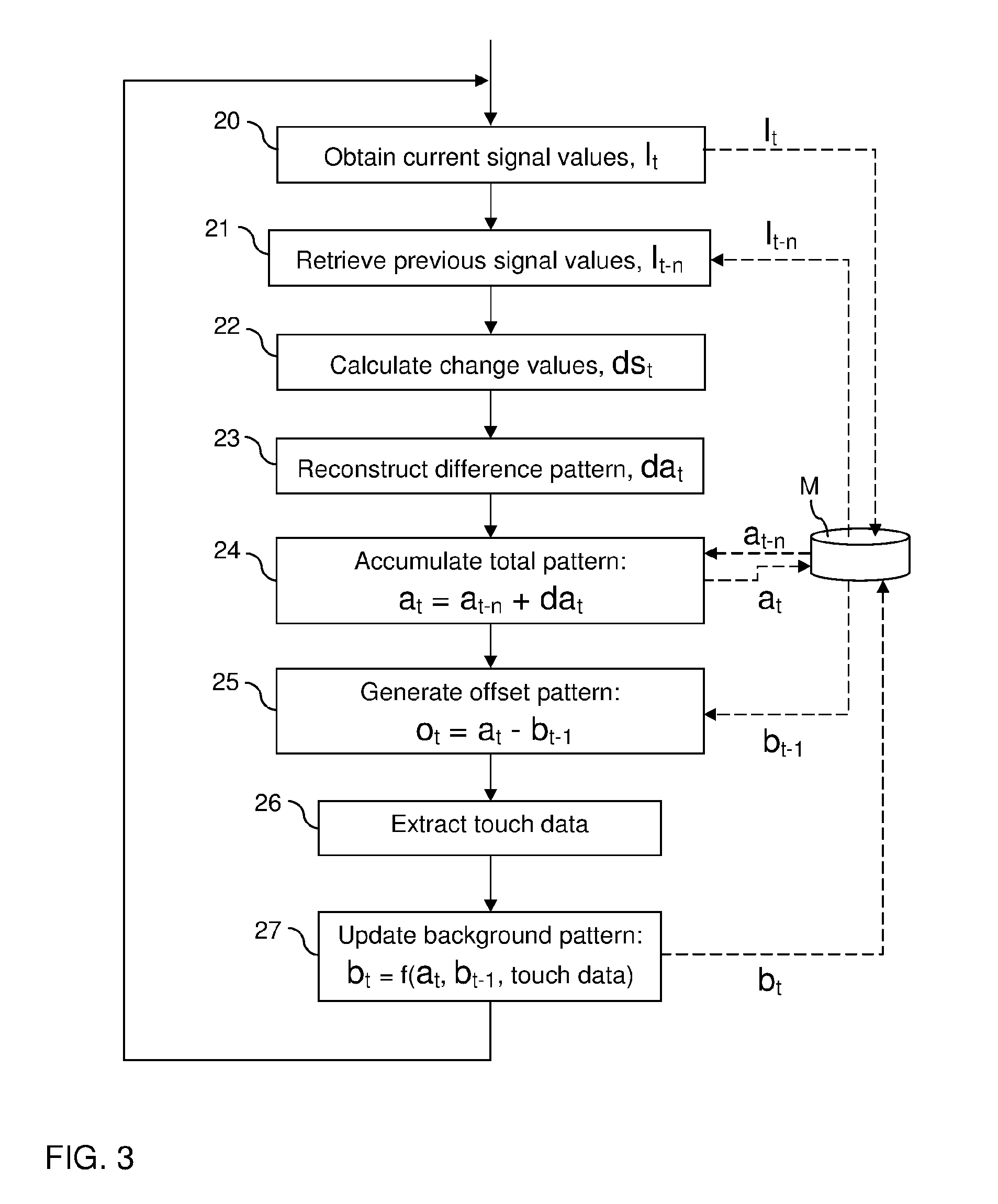Image reconstruction for touch determination
a touch sensor and image reconstruction technology, applied in the field of touch sensing systems and data processing techniques, can solve the problems of significant processing time, difficulty in properly detecting the touch on the touch surface at all, and the degree of interaction between the touching object and the touch surface may vary both, so as to improve the stability and robustness of tracking, avoid or improve the effect of slow variation in the structure of the touch sensor apparatus
- Summary
- Abstract
- Description
- Claims
- Application Information
AI Technical Summary
Benefits of technology
Problems solved by technology
Method used
Image
Examples
first embodiment
[0075]FIG. 3 shows a method for reconstruction and touch data extraction in a touch-sensitive apparatus, such as the above-described FTIR system. The method involves a sequence of steps 20-27 that are repeatedly executed, typically by the signal processor 10 (FIGS. 1-2). In the context of this description, each sequence of steps 20-27 is denoted an iteration or a sensing instance.
[0076]Each iteration starts by a data collection step 20, in which measurement values are sampled from the light sensors 3 in the FTIR system, typically by sampling a value from each of the aforesaid projection signals. The data collection step 20 results in one projection value for each detection line. It may be noted that the data may, but need not, be collected for all available detection lines in the FTIR system. The data collection step 20 may also include pre-processing of the measurement values, e.g. filtering for noise reduction. For the purpose of the following discussion, the current projection va...
second embodiment
[0100]The second embodiment is based on the insight that it may be advantageous to avoid generating the offset pattern by subtracting a background pattern from the total attenuation pattern (step 25 in FIG. 3). As contaminations are accumulated on the touch surface, the total attenuation pattern at as well as the background pattern bt-1 may contain large attenuation values, at least locally. It is thus possible that significant inaccuracies are introduced in the offset pattern ot even by small errors if large attenuation values are subtracted from each other. Furthermore, detection of small differences between large attenuation values may necessitate undesirably high bit resolution in both the total attenuation pattern at and the background pattern bt-1.
[0101]In the second embodiment, the tracking pattern is formed by a background-compensated version of the offset pattern. As will be shown below, this may obviate the need to calculate or track the total attenuation pattern, as well ...
PUM
 Login to View More
Login to View More Abstract
Description
Claims
Application Information
 Login to View More
Login to View More - R&D
- Intellectual Property
- Life Sciences
- Materials
- Tech Scout
- Unparalleled Data Quality
- Higher Quality Content
- 60% Fewer Hallucinations
Browse by: Latest US Patents, China's latest patents, Technical Efficacy Thesaurus, Application Domain, Technology Topic, Popular Technical Reports.
© 2025 PatSnap. All rights reserved.Legal|Privacy policy|Modern Slavery Act Transparency Statement|Sitemap|About US| Contact US: help@patsnap.com



